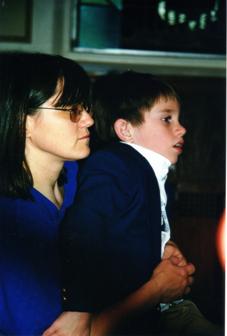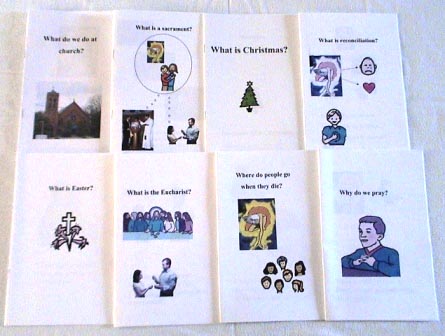
There is no specific year for students to make First Reconciliation and First Communion in the St. Mary's curriculum; it depends on the student. Some lower-functioning students are older when they begin the program, and they can receive the sacraments the first year if they grasp the concepts involved. On the other hand, it makes sense for higher-functioning students to receive the sacraments at the same age as their typically-developing peers.
Social Stories

Sacramental preparation is done through a series of social stories. Social stories are a concept first developed by Carol Gray of the Jenison, Michigan school district for teaching understanding of social situations to students with autism. The stories are read on a schedule throughout the year in which the students will receive the Sacraments. Students also practice receiving unconsecrated host, as many need to get used to the taste and texture.
The following stories are used:
- What do we do at Church? (12 pages) sample page
- What is a Sacrament? (6 pages)
- What is Christmas? (8 pages)
- What is Reconciliation? (11 pages) sample page
- What is Easter? (9 pages)
- What is the Eucharist? (12 pages) sample page
- Where do people go when they die? (8 pages)
- Why do we pray? (11 pages)